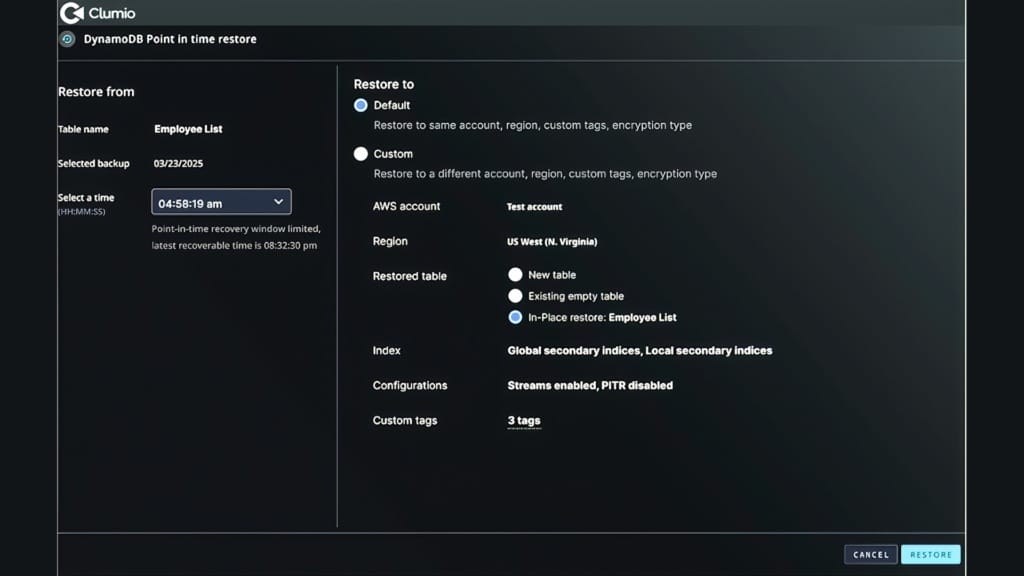Commvault has officially launched Clumio Backtrack for Amazon DynamoDB, introducing a new way for organisations to recover and manage data in one of the world’s most widely adopted cloud-native NoSQL databases. The solution promises faster, more granular recovery options for development teams relying on DynamoDB for real-time, large-scale applications.
Addressing the complexity of cloud-native recovery
Amazon DynamoDB is a critical tool for modern cloud-native development, powering applications such as e-commerce platforms, mobile services, and AI-based systems that demand speed and scalability. However, when it comes to recovering from disruptions such as bugs or accidental data deletion, the process has often been time-consuming and complex.
DynamoDB tables typically include multiple partitions and are updated continuously by connected applications and services. Traditional recovery methods require restoring the entire table to a new instance, copying the affected data back, and then deleting the temporary table. This results in additional storage usage, slower recovery times, and more operational effort — especially for large deployments containing billions of records.
Clumio Backtrack for DynamoDB eliminates this process. It allows organisations to instantly roll back existing tables to a specific point in time without needing to reconfigure their setup. The solution also supports recovery at the partition level, enabling teams to avoid full-table restores. This reduces recovery time, lowers costs, and minimises disruption to business operations.
Reducing downtime and total cost of ownership

The new offering is designed with an “incremental forever” backup model, allowing for more efficient data protection without the need for frequent full backups. This model is intended to lower the total cost of ownership compared to native backup solutions, which typically offer only full-table restore options.
“Organisations are building their next-generation cloud and AI applications on DynamoDB,” said Woon Jung, Chief Technology Officer, Cloud Native at Commvault. “Clumio Backtrack removes the friction and risk from database recovery. Now, teams can roll back or restore their data in minutes, not days, and without needing to perform complex, multi-step manual recoveries. This is another example of Commvault leading the charge in resilience and recovery.”
Industry analysts have also noted the value of this advancement. Archana Venkatraman, Senior Research Director, Cloud Data Management at IDC, commented, “Amazon DynamoDB remains a critical cloud-native NoSQL database in production, thanks to major improvements across consistency, cost and performance. Amid rising data resilience and availability imperatives, precise, point-in-time recovery for DynamoDB is a significant advancement. This granular control reduces downtime, risks and operational costs, key needs for agile development and AI-driven applications.”
Expanding cloud-native capabilities
This launch follows the earlier introduction of Clumio Backtrack for Amazon S3, which enables enterprises to rapidly roll back specific objects to a previous version. Together, these solutions provide AWS customers with increased control, speed, and flexibility as they look to enhance their cloud resilience strategies.
With Clumio Backtrack now covering both Amazon S3 and DynamoDB, Commvault is aiming to deliver a comprehensive data protection offering for organisations developing modern, cloud-based applications.





